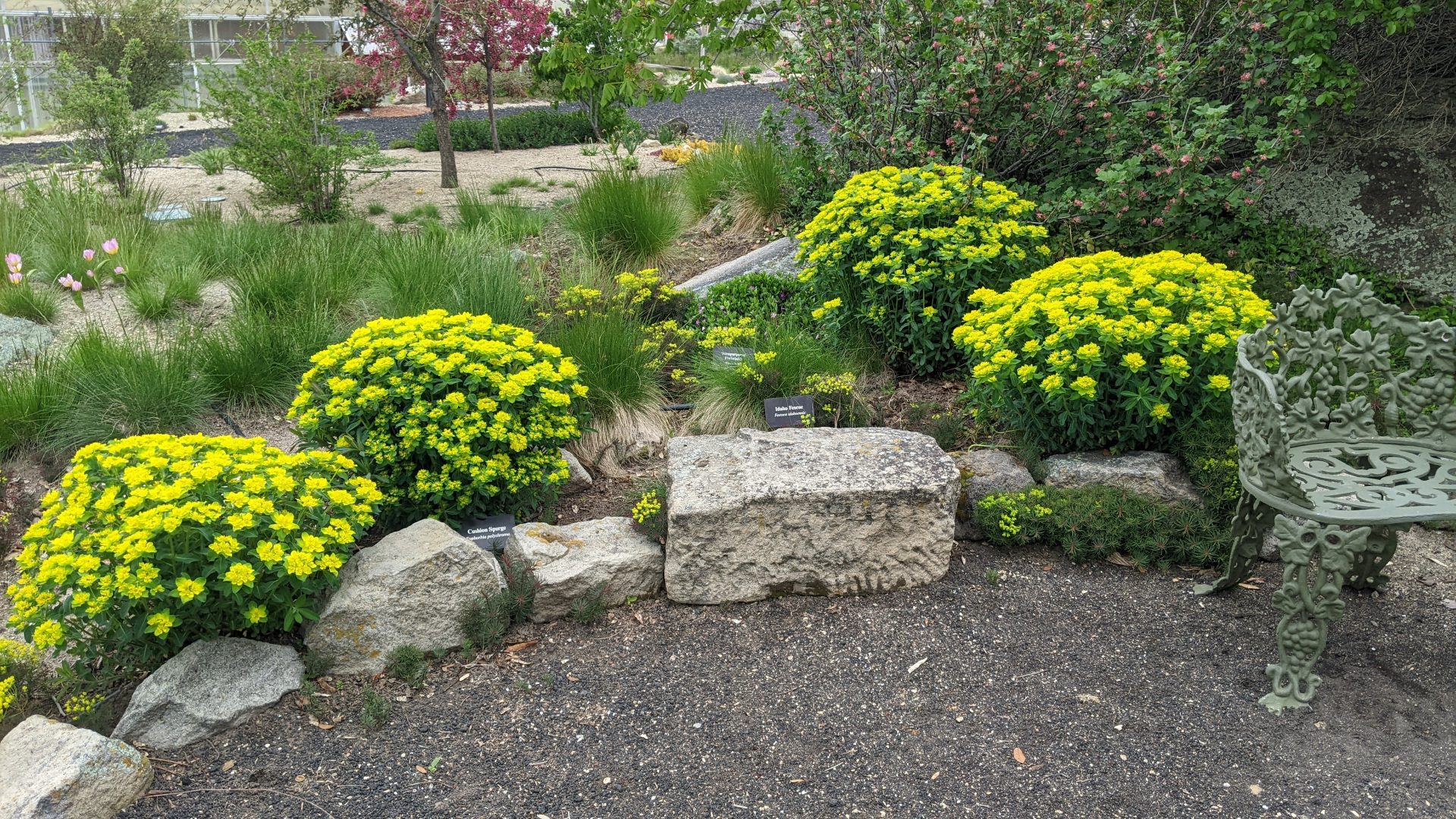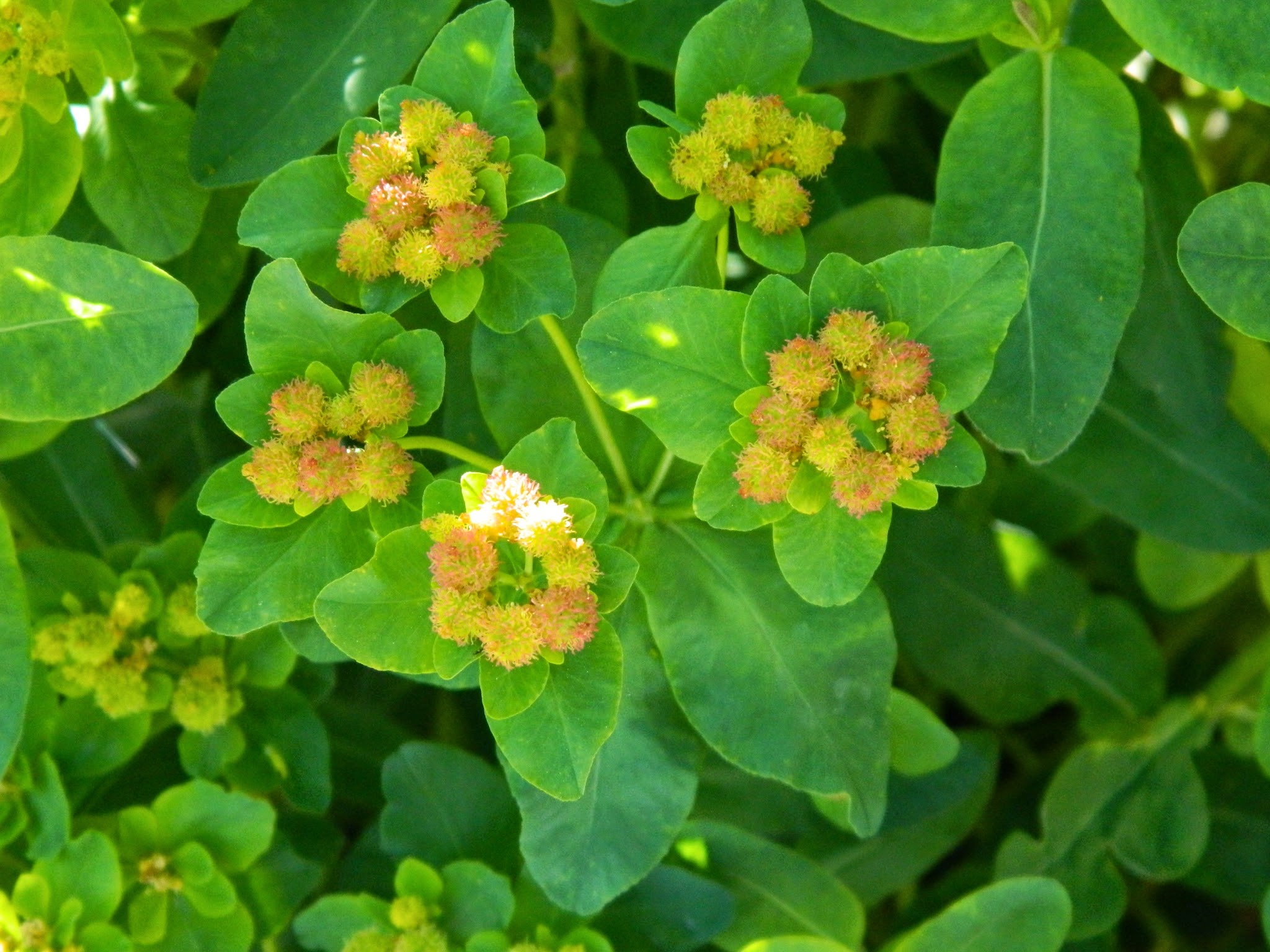Genus: Euphorbia | Idaho Firewise
If you’ve spent much time exploring the outdoors in Idaho, there’s a good chance that you’ve come across Euphorbia plants on some of your adventures. While landscape plants in this genus have attractive qualities, what you’ve seen in the wild likely are introduced or escapee plants, considered invasive in many parts of the country. From a firewise perspective, Euphorbia could be utilized for its fire-resistance due to its latex content – a white, sticky sap, similar to what’s found in most milkweed species. However, Euphorbia does come with disclaimers, and the horticulture staff at Idaho Firewise have learned which species of Euphorbia stay put (non-invasive) and which ones to avoid.
Let’s get the bad news out of the way! There are at least 2 species to watch out for that you may see in the wild as escapee plants: 1). Euphorbia myrsinites, commonly known as myrtle spurge or donkey tail spurge; here’s an article with photos to help identify the plant: Washington State Noxious Weed Control Board | Myrtle Spurge and 2). Euphorbia esula, or leafy spurge; here’s a plant factsheet with an Idaho distribution map: Invasive Species Idaho | Leafy Spurge.
While some reseeding of plants may be an acceptable trait to home owners and gardeners depending on the landscape scenario, we can all agree that escapee plants that integrate themselves into the wild causing a displacement of native plants is not a good thing. Additionally, as many Euphorbia contain latex sap when any part of the plant is broken, this may cause potential harm to both humans and animals.

Some good news! For those that are intrigued with the ornamental value, fire-resistance, and/or pollinator-friendly aspect of Euphorbia, here are tested Euphorbia selections that have not traveled or reseeded themselves in the Idaho Firewise Garden.




Euphorbia ‘Ascot Rainbow’, ‘Blackbird’, ‘Bonfire’, ‘Galaxy Glow’, and ‘Ruby Glow’ have all stayed put and have not reseeded themselves at the garden. Typical maintenance on these are to remove the flower stalks to the base of the plant after they have lost their ornamental value. If any specimens start to lose their structure or appear unhealthy, the entire plant gets taken down to the ground, typically after flowering, for a rejuvenation pruning.



Euphorbia polychroma (syn. Euphorbia epithymoides), or cushion spurge, has been on display in the Idaho Firewise Garden for many years. The gardeners have observed reseeding of this species and while not listed as “invasive”, the species does have the potential to travel. To cut down on the number of volunteers, the maintenance on this plant is to cut it back by at least half once the spring flowers have faded and before seeds have a chance to mature and travel. It’s worth noting that ‘Bonfire’ is a cultivar of Euphorbia polychroma and genetically may have the potential to reseed itself, although at this time, it has not been recorded to have done so by garden staff.
Euphorbia cyparissias ‘Fens Ruby’ (Google image search link) is also on display at the Idaho Firewise Garden as of May 2022. This is an unusual groundcover that has proven to become a bit of a thug and the managing horticulturists have plans to have it removed. There is wisdom in the phrase “right plant, right place”. Be aware of potential issues with plant material, ask lots of questions, be open to always learning more, and use the botanical plant name if using internet sources as your guide.
Euphorbia is an ENORMOUS genus that comprises over 2,000 species!
Many species are considered succulent.
Some species have spines.
Caution: many Euphorbia plants contain latex sap. Some individuals find that they are allergic to latex, especially when the sap is in contact with the skin or eyes. It is generally recommended to always wear gloves when handling any of these plants, or avoid the plants entirely if you know yourself to be allergic.
